Zapier Pricing Breakdown: Is It Still Worth It In 2025?
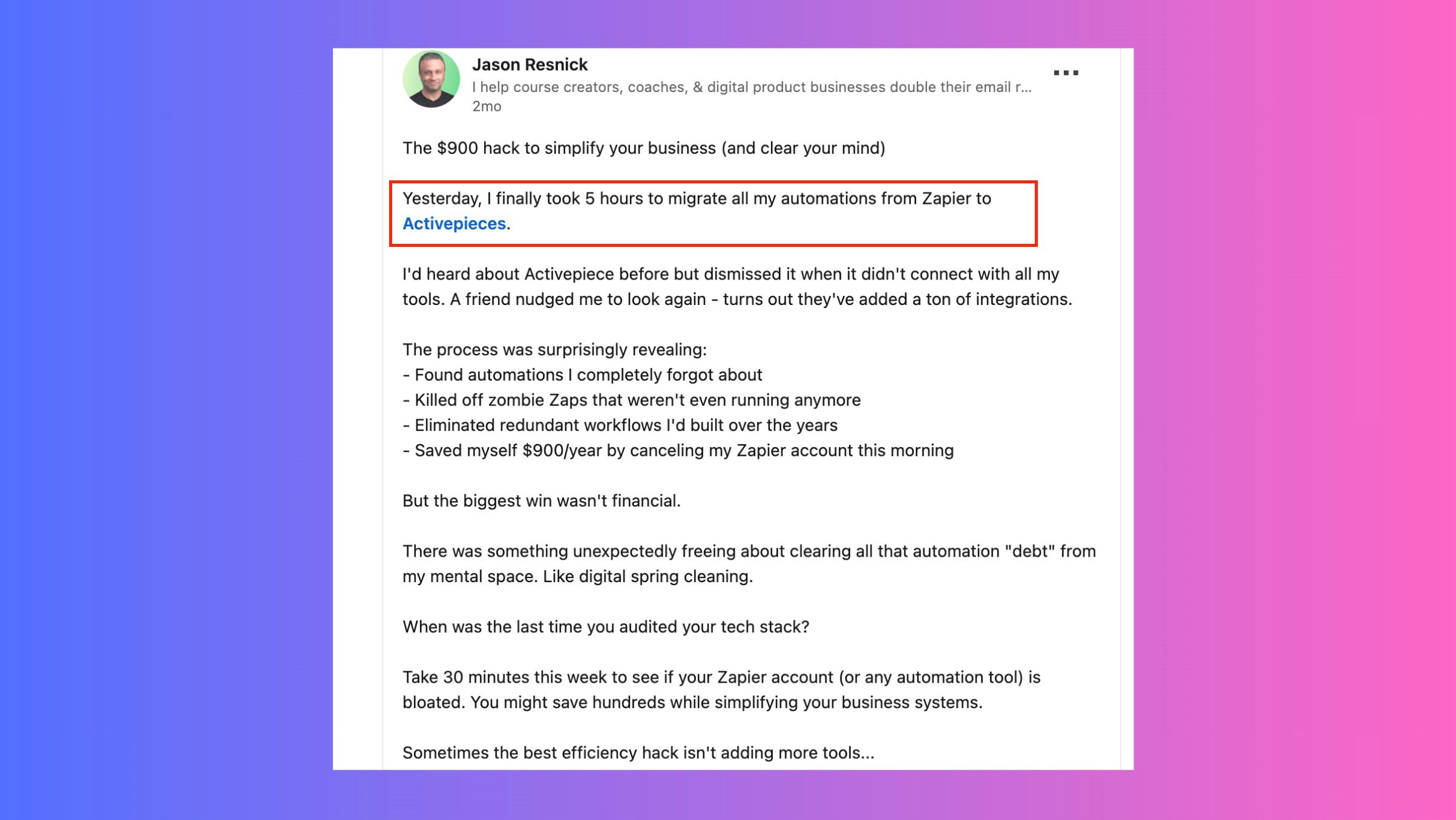
Is the Zapier pricing too expensive for what it offers? Businesses and individuals constantly seek automation tools that provide maximum value without breaking the bank.
Zapier has been around in the automation space for quite a long time. However, with numerous alternatives available now and the increasing need for sophisticated automation, it's important to re-evaluate Zapier pricing in 2025 and determine if it remains a worthwhile investment.
This blog post will provide a comprehensive Zapier pricing breakdown, explore what makes it potentially costly for power users, highlight cheaper or free alternatives with unlimited tasks and more flexibility. By the end of this article, you'll have a clear understanding of Zapier pricing and whether it aligns with your automation needs.
TL;DR
Zapier is great until you need more than 100 tasks/month or want multi-step workflows. Then it gets pricey fast. Activepieces is a powerful, open-source alternative with 10× more free tasks, cheaper paid plans with unlimited tasks, and the flexibility to grow with you.
Now to the longer part of the post ...
What Is The Pricing Strategy of Zapier?
Zapier offers a tiered pricing structure designed to cater to a wide range of users, from individuals with basic automation needs to large enterprises requiring complex workflows. As of 2025, the primary Zapier pricing tiers include the Free plan, Professional plan, Team plan, and Enterprise plan.
Free Plan: It's free forever but you get only 100 tasks per month (1 task = 1 action carried out by any tool connected). Also, your Zaps can't have more than 2 steps
Professional Plan: This is for individuals who require more tasks. The Professional plan starts at $29.99 per month billed monthly for only 750 tasks a month. The more tasks you want , the more charges even for the professional plan
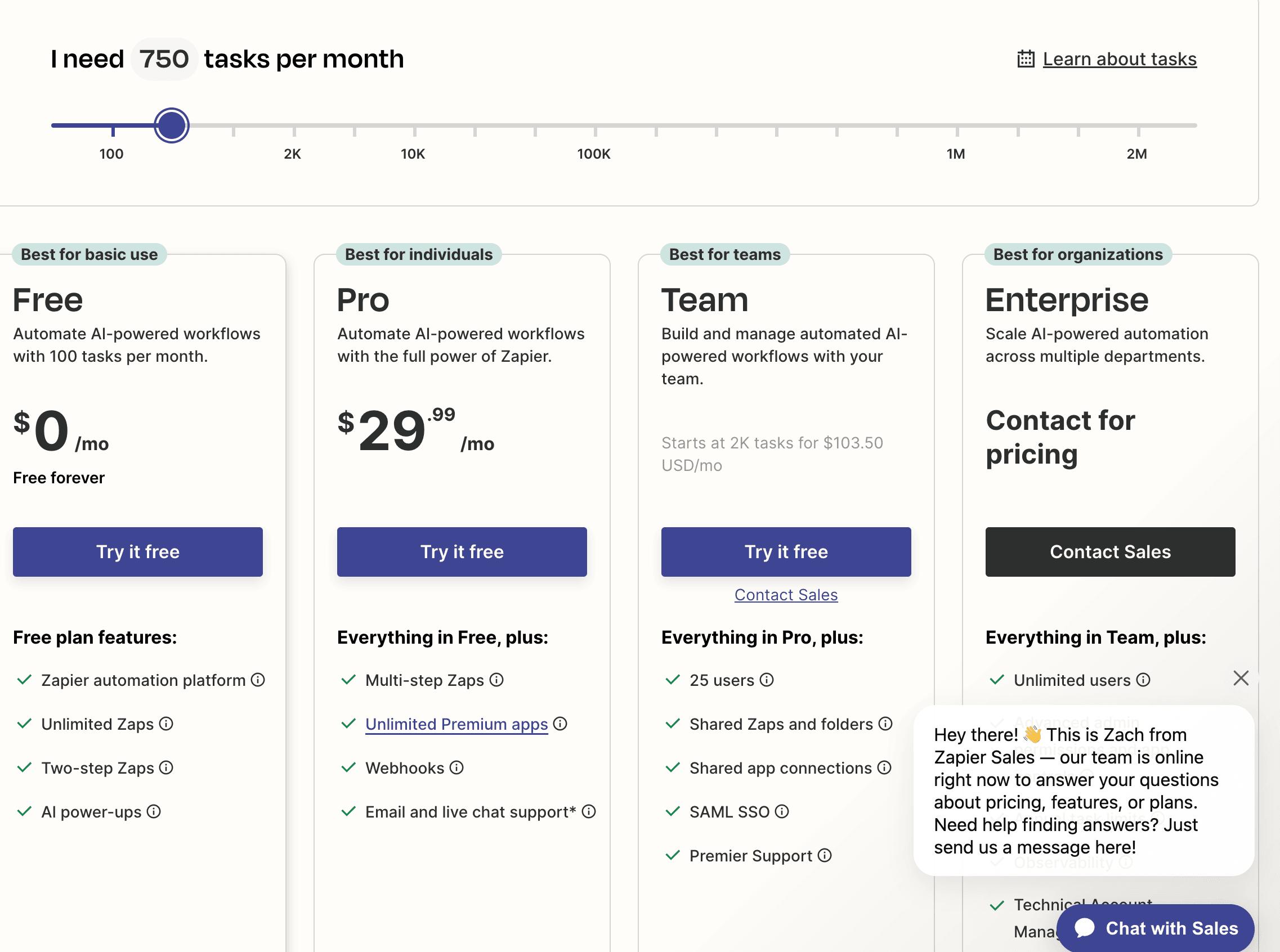
See how significantly the Zapier pricing jumps when you increase your number of tasks to just 1500 on the professional plan
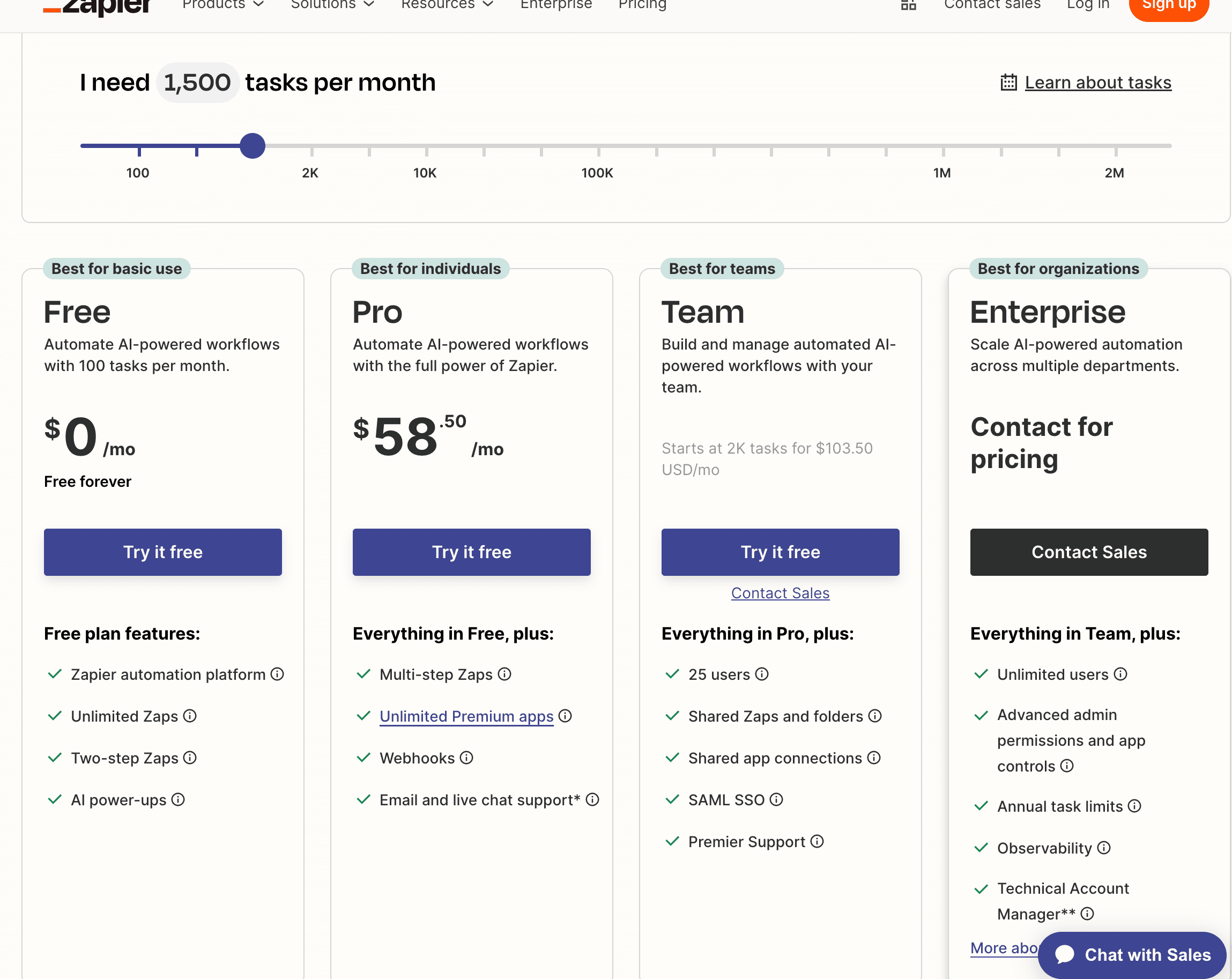
- Team Plan: The Team plan is priced at $103.50 per month and you are only allowed 2K tasks per month for that price. They built this for teams that need to collectively manage and build automation workflows. However, the price jumps if you need more that 2K tasks in a month
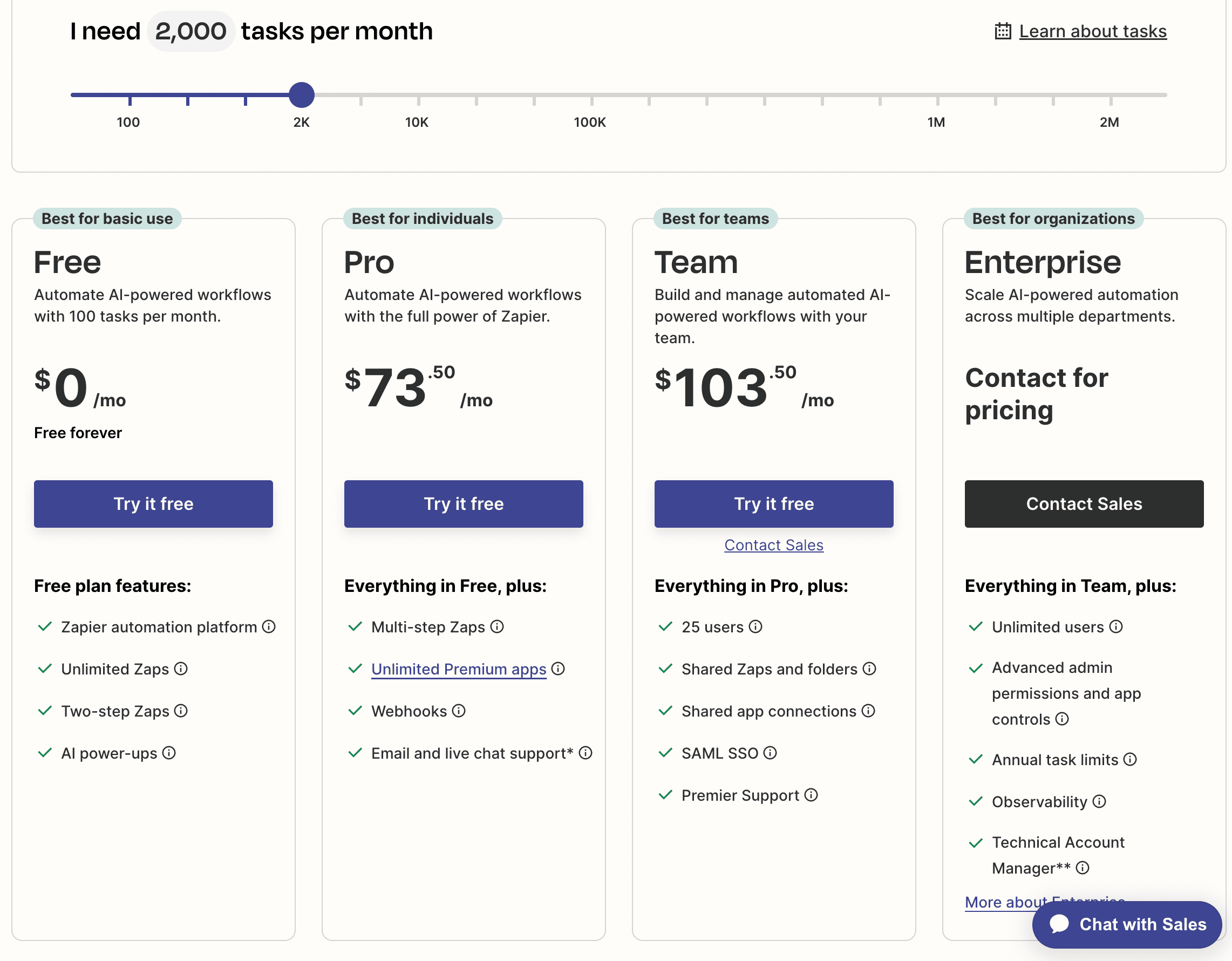
For example, here's what happens if you need 5000 tasks a month
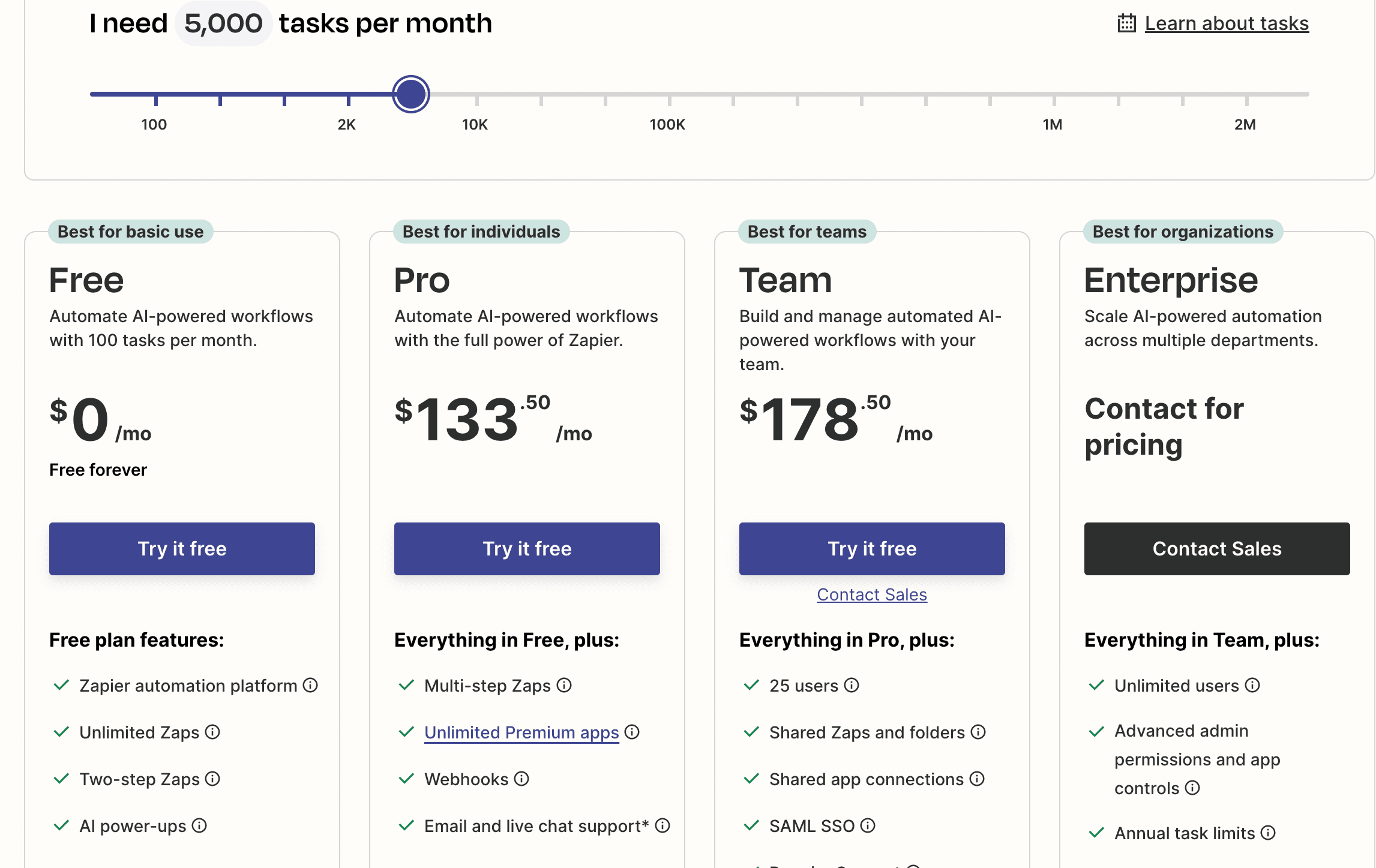
- Enterprise Plan: The Enterprise plan offers custom pricing that requires contacting Zapier's sales team.
Why is Zapier So Expensive for Power Users?
While Zapier offers a range of plans, power users with extensive automation needs often find that the Zapier cost can become significant overtime. The primary reason for this is the task-based pricing model.
For users who have numerous complex workflows running frequently, the number of tasks consumed can skyrocket. As task volume increases, users are often compelled to upgrade to higher-tier plans with larger task allowances, which means a substantial rise in their monthly expenses.
To illustrate how quickly tasks can accumulate for power users, consider these examples:
- High-Volume E-commerce: An online store automating order processing, inventory updates, customer notifications, and shipping label creation for hundreds of daily orders can easily consume thousands of tasks monthly. Each order might trigger multiple steps, quickly depleting task allowances on lower-tier plans.
- Lead Management: Businesses capturing leads from various sources and implementing comprehensive nurturing sequences involving CRM updates, email marketing campaigns, and internal notifications can generate a significant task volume. Each lead might trigger a series of multi-step Zaps.
- Complex Data Synchronization: Users who rely on real-time synchronization of data across multiple business applications, such as CRM, marketing automation platforms, and project management tools, can incur high task usage. Frequent updates and large data sets can lead to substantial task consumption.
- Social Media Management at Scale: Automating content posting, engagement tracking, and reporting across multiple social media platforms for various clients can lead to a high number of tasks, especially with frequent updates and detailed analytics.
For a deep dive into the effect of this task-based pricing on real business scenerios, check out this article: We Flipped the Script on Automation Pricing
What Are the Cheaper or Free Alternatives to Zapier?
For users seeking more budget-friendly options, several compelling alternatives exist in the market. Some popular choices include:
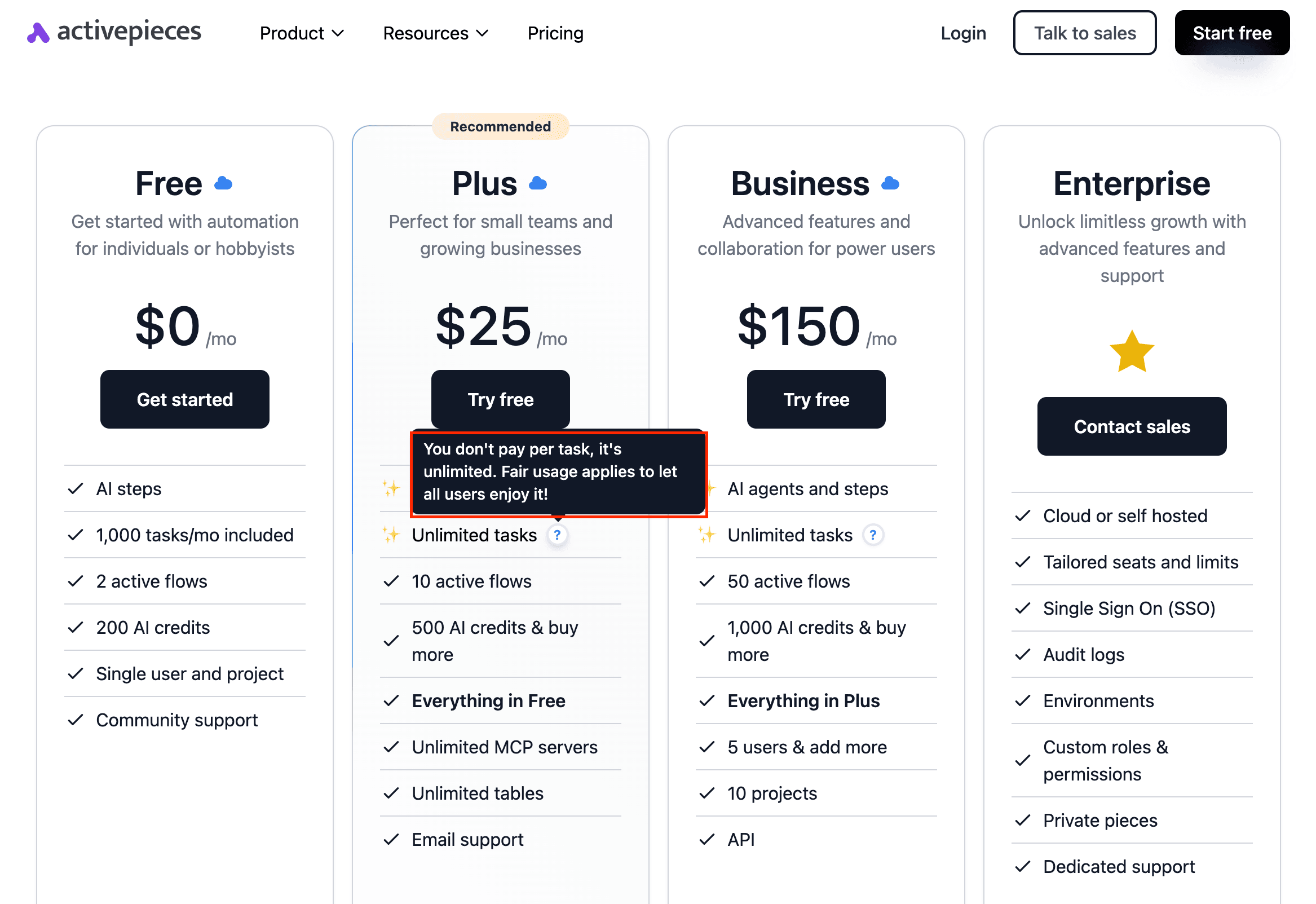
It is an open-source automation platform. This means anyone can read the code of the software and modify it. If there is a missing app on Activepieces, you can easily add it, or better you can copy an existing app and extend it. It is loved by both IT/Engineering teams for its flexibility and enterprise grade security and loved non non-technical teams because of its ease of use. You can also embed Activepieces in your SaaS application to have more control over your data. Activepieces is licensed by MIT
Make.com: Make is known for being a cheaper alternative to Zapier especially for complex automations. It costs $16/mo for the recommended pro plan . However, you can’t write code in your flow unless you are an enterprise customer. Also, Make barely offers any support to their users on the free/medium plans, and because of its complexity, you will very likely need support.
Pabbly Connect: Offers affordable pricing plans and a free plan, but features like unlimited workflows only come with paid tiers. For example, the Standard plan ($19/month) includes unlimited workflows, while the free plan has restrictions on the number of workflows you can create
IFTTT (If This Then That): IFTTT is also a cheap alternative to Zapier with their Pro plan costing $2.99/mo (billed annually) but you are limited to 20 Applets (workflows). However it focuses on simple, trigger-action automations. It is mainly for small business owners or people who don’t have complex automation needs.
Zapier vs Activepieces
So what makes Activepieces better than Zapier anyways?
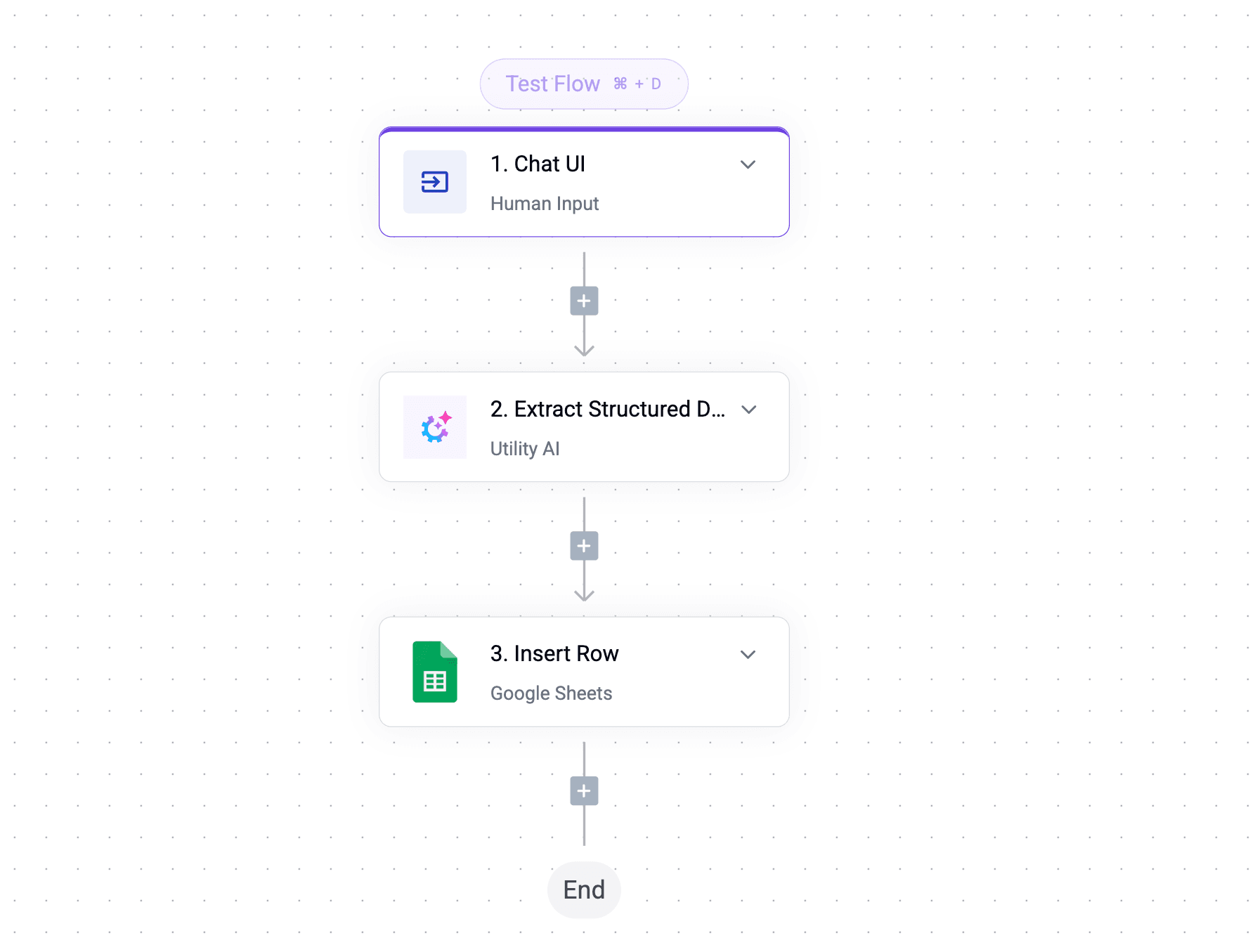
When considering a switch from Zapier or choosing a new automation platform like Activepieces, a direct comparison between these tools is essential.
Here's a breakdown comparing Zapier Vs Activepieces to help you make a more informed decision
| Feature | Zapier | Activepieces |
|---|---|---|
| Pricing Model | Tiered plans with monthly task limits | Open-source with scalable pricing based on usage (pay-as-you-go) |
| Free Plan | Provides only 100 tasks a month | Provides 1000 tasks a month |
| Starting Price (billed monthly) | Pro plan: $73.50/mo (only 2k tasks) Team plan: $103.50/mo(only 2K tasks) Enterprise plan: Contact sales |
Plus Plan $25 (unlimited tasks) Team plan: $150 (Unlimited tasks) Enterprise plan: Contact sales Embed to your SaaS: Contact sales |
| User-Friendliness | User-friendly with a drag-and-drop interface | User-friendly drag-and-drop interface. Well-arranged and intuitive dashboard. |
| Integrations | Large number of apps connected, but difficult to add missing ones | Fewer apps than Zapier, but easy to add your own. Supports flexible custom integrations via APIs. |
| Workflow Complexity | Suitable for basic to moderately complex workflows | Great for complex workflows with branching logic and custom error handling, while remaining intuitive |
| Scalability | Task-based pricing can get expensive at high volumes | Highly scalable and cost-effective for high-volume automation |
| Extensibility | Limited — requires app developers to list apps on Zapier | Open-source platform allows extensive customization and self-hosting |
| Privacy & Control | Data is managed on Zapier's servers | Self-hosting gives full control over data, improving privacy and security |
Tired of Zapier's limitations or the ever-increasing costs associated with scaling your automation?
Consider making the switch to Activepieces. It's free, you can enjoy powerful workflow automation without the constraints of task-based pricing.
Experience the flexibility of an open-source highly secure platform, build complex workflows tailored to your exact needs, and benefit from greater control over your data and privacy.
Start with a free account today


